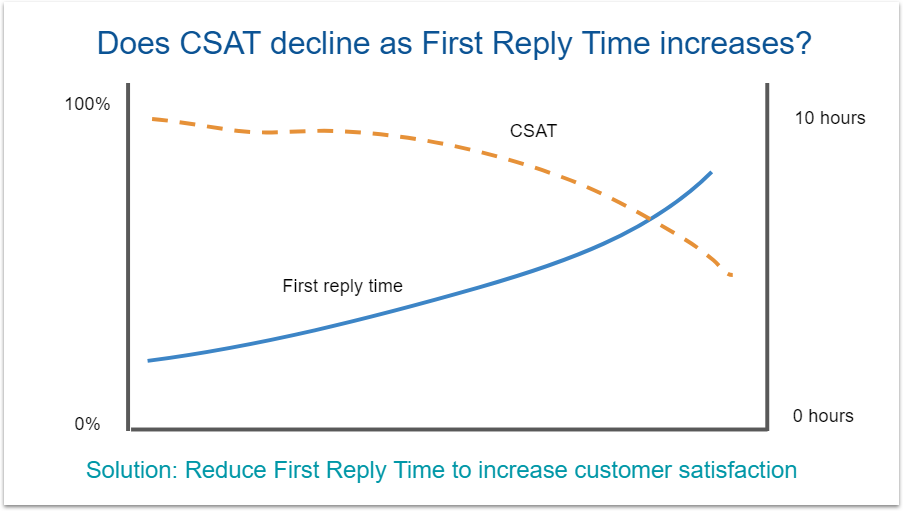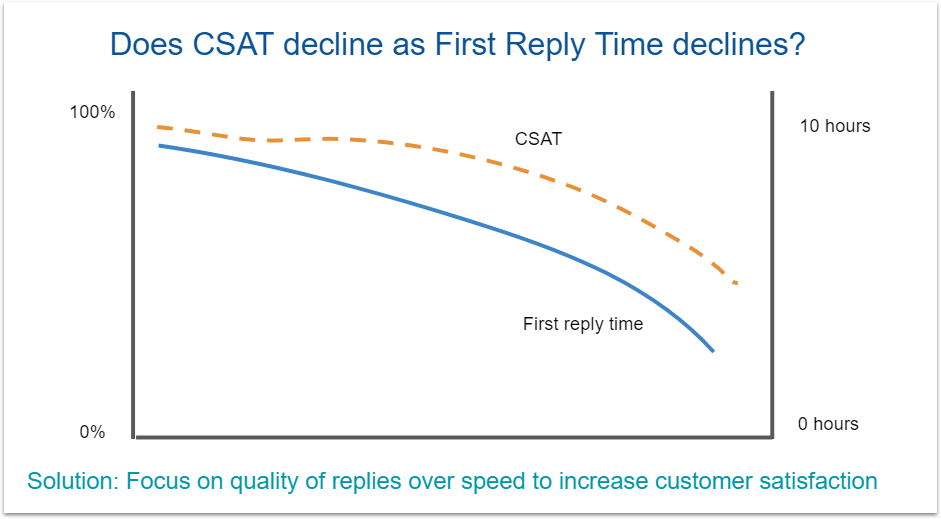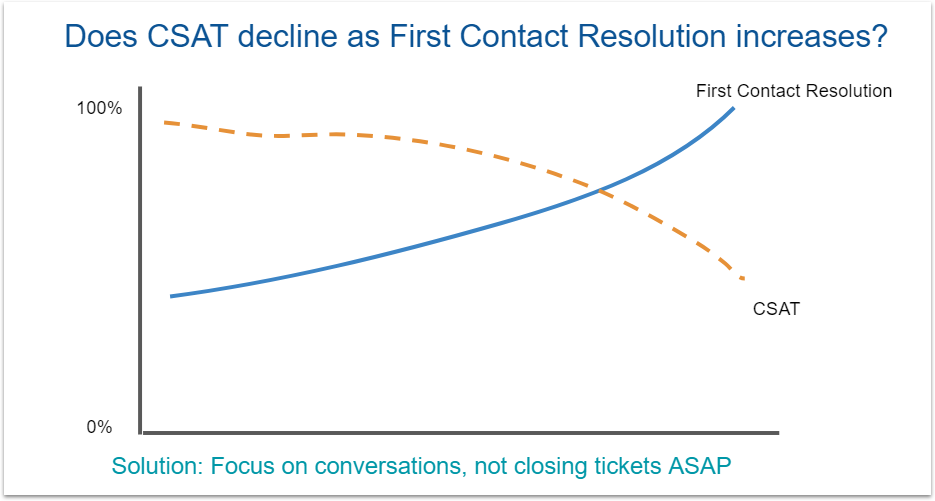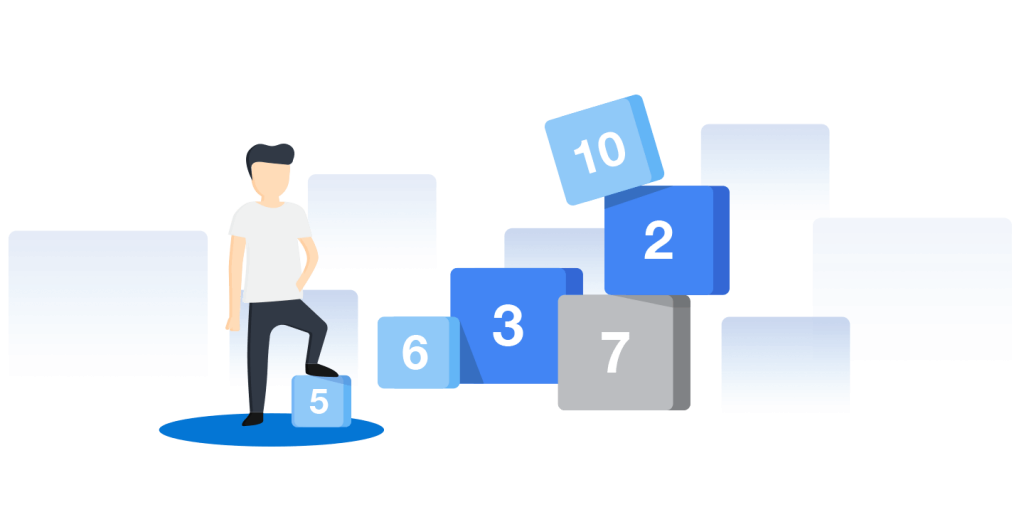How can you combine customer satisfaction metrics? It might seem overwhelming, so we’ve put together our favorite matchups to help you get started.
In the world of customer support metrics, Customer Satisfaction (CSAT) is king. Teams of all sizes, stages, and industries measure CSAT to shed light on the quality of their support. They identify customers who need extra attention, improve their operations, and increase customer happiness. It’s no wonder that it’s arguably the #1 support metric.
Start your day
with great
quality
content
But, it can be lonely at the top. When CSAT is put on a pedestal, focused on too strictly, or isolated from other customer satisfaction metrics, you lose valuable context and insight.
How to combine CSAT with other metrics?
No one metric is a silver bullet for team success — customers and teams are far more complicated than that. And no metric lives in a vacuum. Customer satisfaction metrics overlap and intersect. As such, looking at them in combination helps paint an even richer picture of your customer experience and team operations than looking at just one alone.
With all the different customer satisfation metrics and potential intersection points, the thought of looking at to combine CSAT with other metrics might seem overwhelming, so we’ve put together our favorite matchups to help you get started.
CSAT + Speed metrics
If CSAT is king of the customer support metric scorecard, then speed metrics like time to first response and time to full resolution are the crowned princes.
Nearly every support team includes a measure of speed in their metric lineup. It makes sense – customers really love getting help fast. In fact, Forrester found that 73% of consumers believe valuing their time is the most important aspect of quality customer service.
While we all know that response speed in support is important, different customer bases have different sensitivities to response speed. Underestimate it, and you won’t be getting back to your customers as quickly as they expect.
Overestimate it, and you risk being overstaffed or wasting valuable team resources where they could be better used elsewhere.
Speed is Important

Lining up CSAT and speed metrics side shows you just how important speed is to your particular customer base. Plot your response time and CSAT side-by-side. Take note of places where your CSAT drops. Are those places also inflection points for your response time?If your CSAT drops as your response time rises, then work on bringing your response times down in order to increase CSAT. If your CSAT drops at the same time as your response time, this could mean that your team is rushing through tickets — so while customers are getting fast responses, they’re not getting quality responses.

You might also notice that after a certain point, you’re running up against diminishing returns in your efforts for speedy replies.
As your responses get faster and faster, the increase in CSAT will likely get smaller. Eventually, you’ll reach a point where additional decreases in response time won’t matter much for CSAT, so you should turn your resources to other endeavors.
Together, CSAT and speed metrics help you prioritize your efforts and operate efficiently while keeping customers happy.
CSAT + NPS
Another powerful metric match up is between CSAT and Net Promoter Score (NPS). NPS was developed specifically to measure customer loyalty, based on a customer’s likelihood to recommend your product to others. Unlike CSAT, it refers more broadly to a customer’s overall experience instead of just one support interaction.
By lining up both the CSAT and NPS scores of individual customers, you can start to sort them into groups based on their satisfaction with your support. Also, based on their overall loyalty to your product.
- High CSAT and high NPS
These are your dream customers, your advocates. They’re happy with your support, loyal to your company, and likely to recommend your product to others. These customers can be tapped for case studies, testimonials, referrals, product feedback sessions and interviews, or to participate in customer advisory groups.
Consider showing these customers your appreciation by sending them a thank-you email or gift.
Read: How to work with your Promoters
- High CSAT and low NPS:
These customers, although happy with your support, aren’t loyal to your product and could be at risk of churning. Follow up with them to find out what’s driving their low NPS score. Since they’ve recently had a positive support interaction with you, they’ll be even more likely to be receptive to your outreach.
Their low NPS score might be the result of needing education on some of your product features. You can then provide that education to help them get more out of the product. Or, the low score could be due to bugs or problems with your product. In that case, your proactive attention may be enough to keep them invested for long enough until the issues are fixed. And when that happens, you can score extra bonus points by following up with them again to let them know.
This type of thoughtful update demonstrates your commitment to customer experience, sets you apart from your competitors, and creates more advocates.
- Low CSAT and high NPS:
Although these customers love your product overall, they’ve had a poor support experience and are now at risk of loving your product a lot less. If you’re not already investigating low CSAT scores and reaching out to the customers who leave them, try to at least follow up with these customers to see if you can provide a better support experience and turn them into advocates.
- Low CSAT and low NPS:

This group is at the highest risk of leaving, and they’re nearly a lost cause. You can follow up with them if you’ve somehow got idle hands, but otherwise, they’re best left alone.
By sorting your customers into these groups based on their combined CSAT and NPS scores, you can take meaningful actions to strengthen your relationships with them.
CSAT + FCR
First contact resolution (FCR) is a measure of the percentage of inquiries that are solved in a single interaction. Many teams shoot for a high FCR and to reduce the number of touches it takes to close a ticket, in the interest of agent efficiency as well as customer satisfaction.
With few exceptions, customers don’t like to go back-and-forth about their issue. In fact, one report by the SQM Group claims that every 1% improvement to FCR comes with a 1% improvement to CSAT.
Low FCR
A low FCR could indicate that inquiries aren’t being routed correctly. Inquiries are being answered by the wrong people, that your team isn’t properly trained. Or that your team is rushing through responses, resulting in poor quality answers that don’t account for all the details or the situation or anticipate other customer questions or needs.
High FCR

But a high FCR doesn’t automatically lead to high CSAT. Your team could be giving poor quality responses, resulting in dissatisfaction so severe that customers don’t even bother to reopen their inquiries. Or, customer issues are truly being resolved in one interaction, but with no finesse or care.
Look at FCR alongside CSAT. If CSAT is low in spite of high FCR, dig deeper into the responses your team is sending and the CSAT commentary to ensure that quality isn’t suffering. You might see that customers are submitting a series of tickets that are all resolved in one contact – but that the customer is still struggling.
Taking the time to fully understand and resolve the customer’s concerns is more important than the immediate FCR.
To combine CSAT and FCR together, you’ll ensure you aren’t over-incentivizing one at the other’s expense.
CSAT + Agent Metrics
If you’re tracking and managing individual customer satisfaction metrics for each member of your team, then it’s likely that CSAT is on your scorecard. But focusing too narrowly on CSAT for performance can lead to biased evaluations of performance. Be sure to have a balanced scorecard and a holistic point of view that takes into account all aspects of an agent’s work.
For example, an agent with a low CSAT score may be handling more difficult tickets for which there’s no clean answer, which leaves the customer dissatisfied with the general resolution even if the agent’s handling was good.
To get a view of the overall level of difficulty and composition of each agent’s tickets, you can cross CSAT scores with ticket tags. Also to take a more manual approach and read through individual responses to get a pulse on where the scores are really coming from.
Raising individual CSAT is an important and worthwhile goal, but don’t be too single-focused. Even if a lower CSAT score is within the agent’s control, remember that your team members have different strengths and be sure to celebrate those.
Drivers of Dissatisfaction (DSAT)
While most teams focus big goals around average CSAT scores, looking beyond the average helps you uncover specific drivers behind dissatisfaction so you can work to fix them. Measuring the Drivers of Dissatisfaction, sometimes called DSAT, involves collecting, codifying, and reporting on dissatisfied scores.
Start by reviewing the commentary left alongside low scores. You’ll notice trends from which you can develop a system of categories that might include things like support operations, bugs, or feature requests.
After you have your system, review each low score and assign it to a category. There’s some subjectivity to this, so it’s best for this process to belong to one person.
Your volume is so high that you need more than one person involved. So be sure to do regular calibration among the group.
From there, you can start reporting on your data to show which categories are contributing most to low CSAT scores. And from there, you can work on tackling the problems with those categories- improving your customer experience and your CSAT in the process.
Going through a DSAT process is also a good time to identify cases.
Where you can follow up with a customer to clarify a response or offer more help, ensuring they’re happy and possibly getting them to change their CSAT rating. In these instances, be tactful and speak in a helpful tone that won’t be mistaken for defensiveness.
Level Up
The popularity of CSAT is understandable. On its own, it’s a great start for any team looking to get better at helping their customers. But going to the next level and combine CSAT with other customer satisfaction metrics reveals additional layers of information. Also it nuance that you can use to level up your customer experience — and that’s worth the extra effort.












